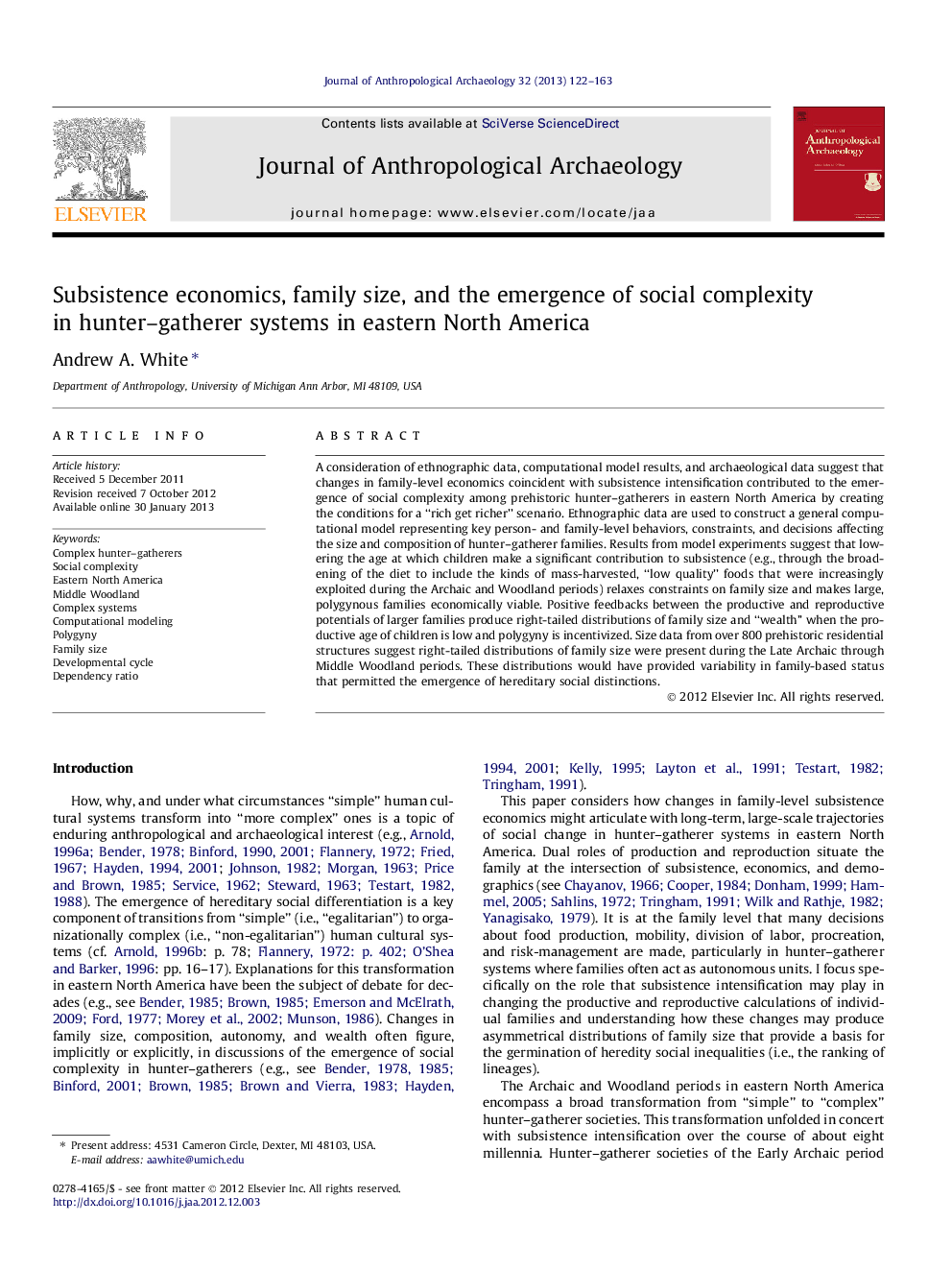| Article ID | Journal | Published Year | Pages | File Type |
|---|---|---|---|---|
| 1034985 | Journal of Anthropological Archaeology | 2013 | 42 Pages |
A consideration of ethnographic data, computational model results, and archaeological data suggest that changes in family-level economics coincident with subsistence intensification contributed to the emergence of social complexity among prehistoric hunter–gatherers in eastern North America by creating the conditions for a “rich get richer” scenario. Ethnographic data are used to construct a general computational model representing key person- and family-level behaviors, constraints, and decisions affecting the size and composition of hunter–gatherer families. Results from model experiments suggest that lowering the age at which children make a significant contribution to subsistence (e.g., through the broadening of the diet to include the kinds of mass-harvested, “low quality” foods that were increasingly exploited during the Archaic and Woodland periods) relaxes constraints on family size and makes large, polygynous families economically viable. Positive feedbacks between the productive and reproductive potentials of larger families produce right-tailed distributions of family size and “wealth” when the productive age of children is low and polygyny is incentivized. Size data from over 800 prehistoric residential structures suggest right-tailed distributions of family size were present during the Late Archaic through Middle Woodland periods. These distributions would have provided variability in family-based status that permitted the emergence of hereditary social distinctions.
• The emergence of complex hunter–gatherers in eastern North America is investigated. • A computational model is used to represent family-level productive and reproductive behaviors. • Lowering the age at which children become producers relaxes constraints on family size. • Positive feed backs produce right-tailed distributions of family size and wealth. • Intensification fueled the emergence of social strata through a “rich get richer” scenario.
